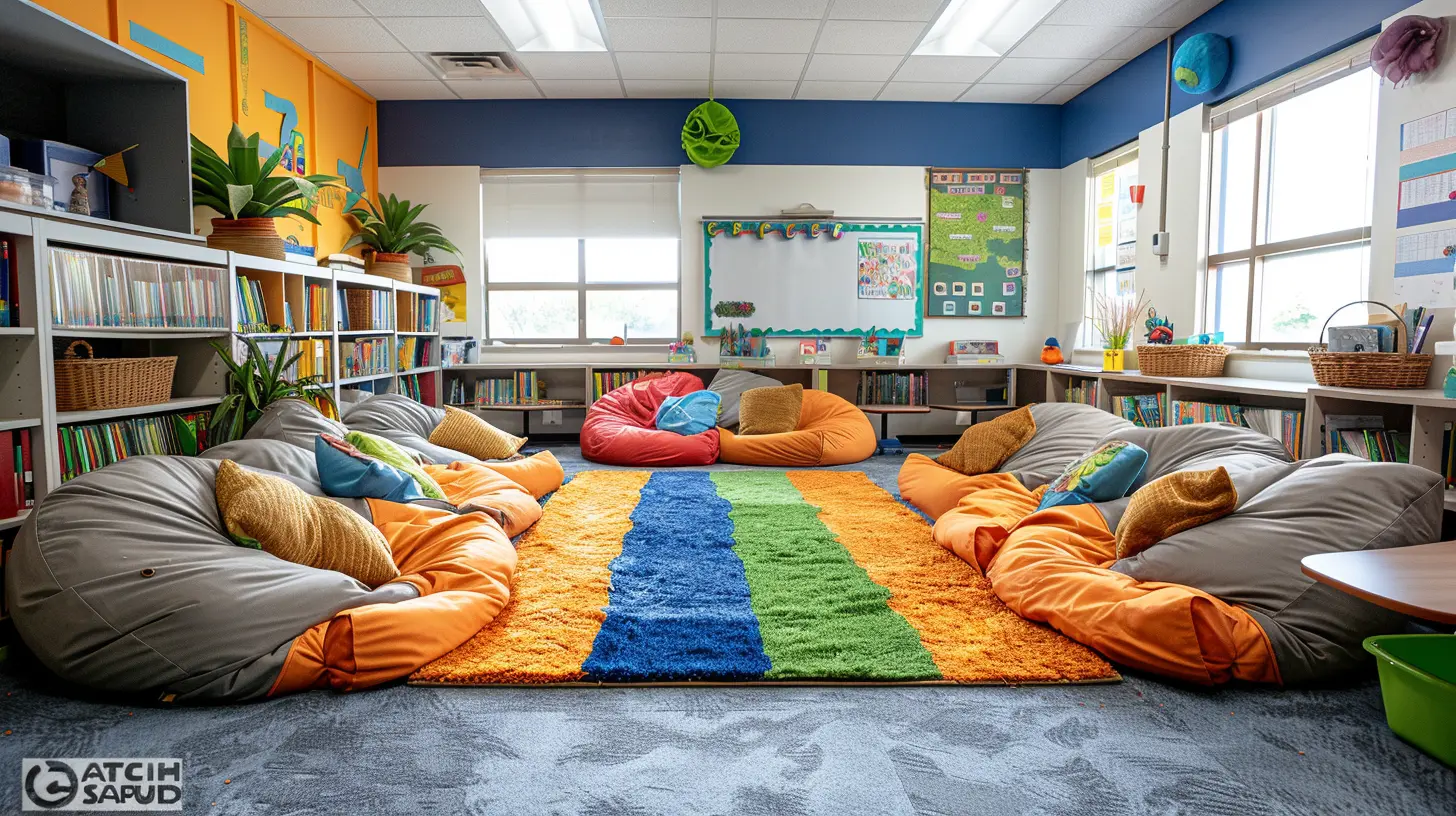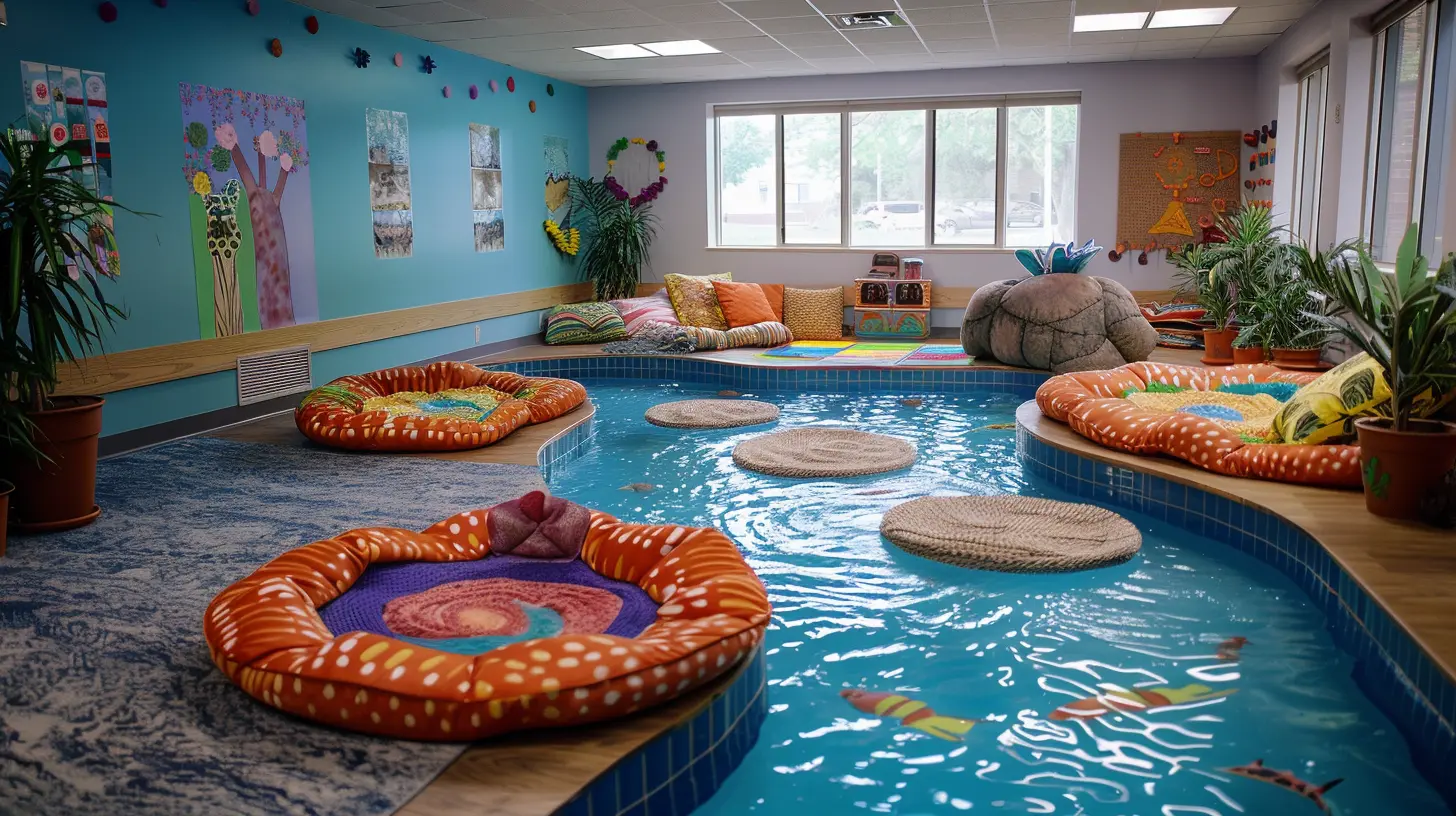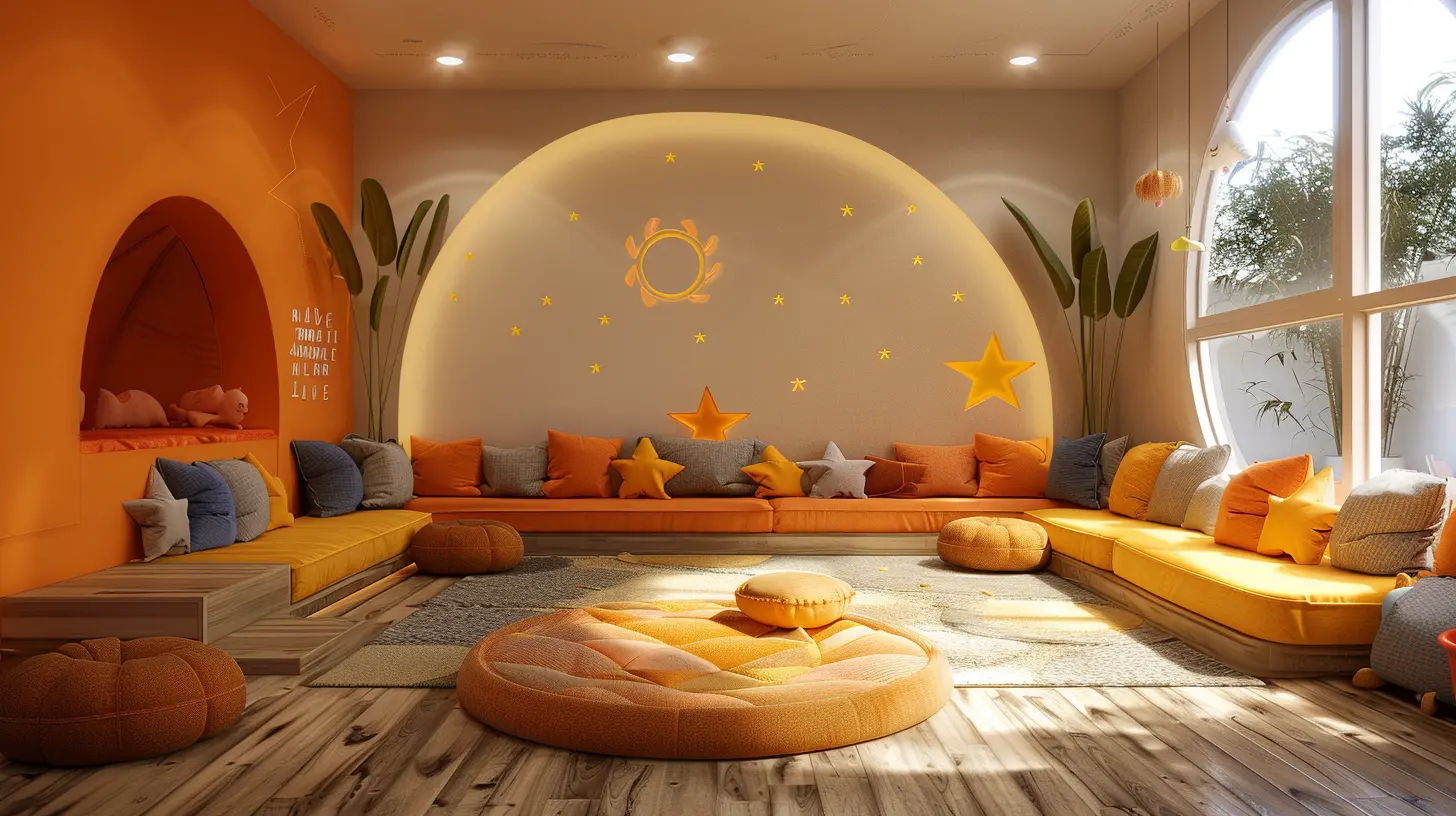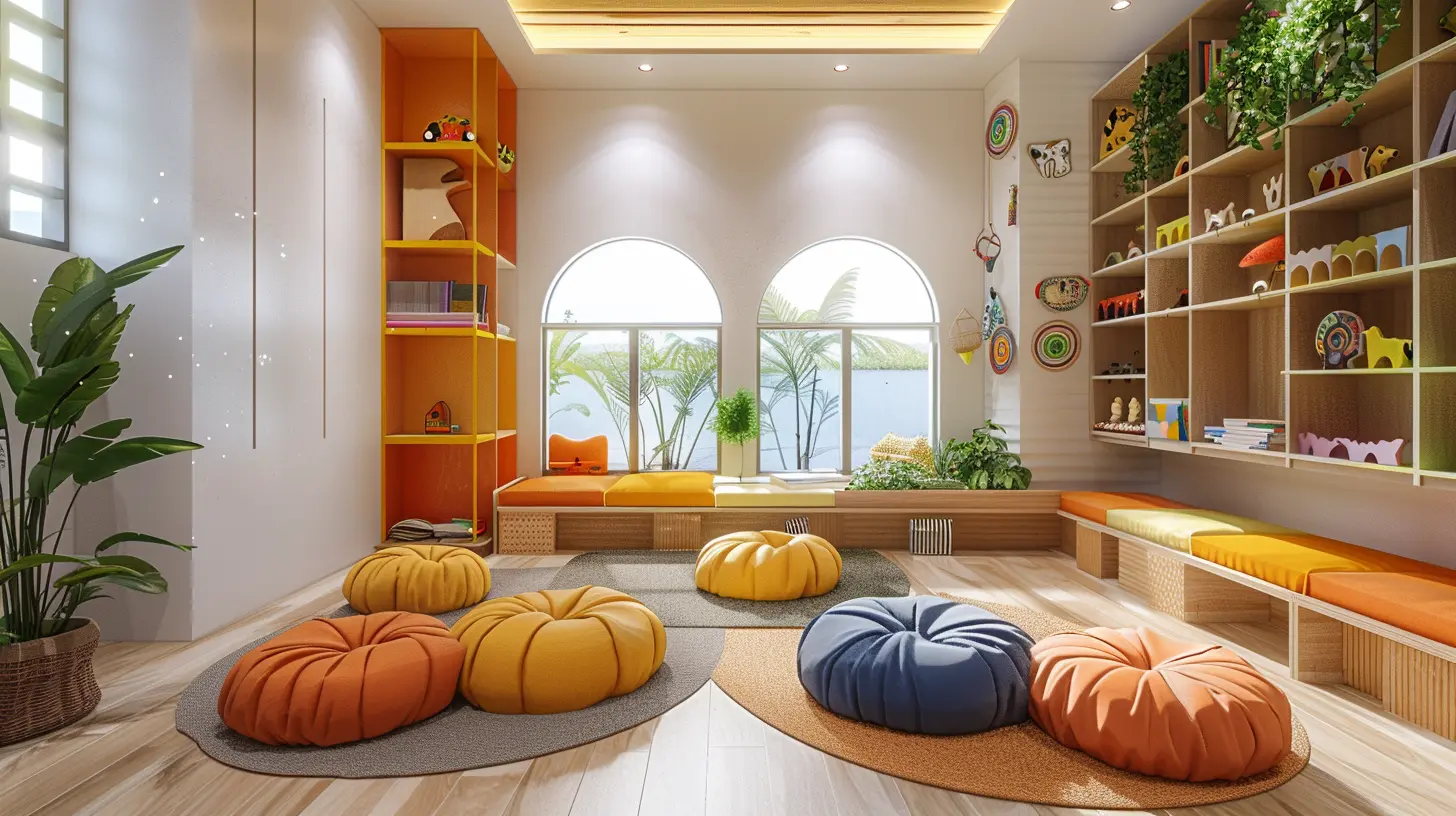Sensory-Friendly Classroom Design: Tips for Success
27 June 2025
Creating a sensory-friendly classroom isn’t just a nice idea—it’s a necessity. If you've ever wondered why some students get distracted by the hum of fluorescent lights or seem overwhelmed in busy, colorful classrooms, you're not alone. More and more educators are realizing that traditional classroom designs don’t work for every child, especially those with sensory processing challenges. But the good news? With a bit of thought and creativity, you can design a space that helps every student feel calm, focused, and ready to learn.
Let’s unpack what a sensory-friendly classroom looks like and how you can bring this concept to life in your own learning environment.
Why Sensory-Friendly Design Matters
First off, let’s get clear on the “why.” Not every student processes sensory information the same way. Some are hypersensitive to sound, light, or textures. Others are hyposensitive and need more input to stay engaged. And many fall somewhere in between.Students with autism spectrum disorder (ASD), ADHD, anxiety, or other neurodiverse conditions often face challenges in traditional classrooms. Loud noises, bright lights, or uncomfortable seating can trigger stress, cause meltdowns, or simply make it harder to concentrate.
By creating a space that supports various sensory needs, you’re not only helping those students—you’re improving the environment for everyone. Who doesn’t benefit from a little peace in a chaotic world?
Start with a Sensory Audit
Before moving furniture or buying new gadgets, take a moment to observe your classroom. Sit where your students sit. Look around. Listen.- Is there a lot of visual clutter on the walls?
- Can you hear the constant buzz of the overhead lights?
- Are the chairs hard and uncomfortable?
- Is the smell from the cafeteria wafting in?
These details may seem small, but they can mean the difference between calm and chaos for a student with sensory sensitivities.
Write down your observations. This is your sensory audit—a baseline of how your classroom currently impacts the senses.
Create Calm with Color
Ever walk into a room and instantly feel more relaxed or, on the flip side, more anxious? That’s the power of color.In a sensory-friendly classroom, less is more. Loud, bright colors can overstimulate. Instead, go for muted tones—think soft blues, gentle greens, calm grays, or even neutral beiges. These colors promote relaxation and help reduce visual stress.
You don’t have to repaint the whole room. Start by minimizing overly bright posters, using calming backgrounds on bulletin boards, or switching up storage bins to softer tones.
Bonus tip: Give students some creative freedom within boundaries. Let them personalize name tags or desk spaces with calming colors they like.
Lighting: A Game-Changer
Fluorescent lights. Ugh. They hum, flicker, and can be a nightmare for kids (and adults, let’s be honest) who are sensitive to light.If you can, use natural light as much as possible. Open the blinds, rearrange furniture to make use of windows, and avoid blocking light sources.
When natural light isn’t an option, here are some easy upgrades:
- Lamp it up: Table or floor lamps with soft white bulbs provide a much gentler light.
- Light filters: You can get inexpensive fabric light covers to tone down those harsh overhead lights.
- Dim the mood: Use dimmer switches if available—or ask if modifications can be made.
Remember, lighting sets the mood. Think cozy coffee shop vibes, not interrogation room.
Sound: Reduce the Noise
Sound is one of the biggest culprits when it comes to sensory overload. And let’s face it, classrooms can get loud.If your room echoes or amplifies noise, it can increase anxiety for noise-sensitive students. Here are a few fixes:
- Soft furnishings: Rugs, curtains, bean bags, and bulletin boards all help absorb sound.
- Noise-canceling headphones: Offer them to students who need a break from the buzz.
- Quiet zones: More on that in a minute—but designated low-noise areas are gold.
- Calm-down playlists: Gentle background music or nature sounds can help soothe and focus.
Try to keep sudden loud noises, like bells or alarms, to a minimum—or at least give students a heads-up when you know they’re coming.
Furniture and Layout: Flexible is Key
Gone are the days of desks in neat little rows. Today’s sensory-friendly classrooms need flexibility. Why? Because all students are different. Some need to wiggle, some want to stretch out, and others focus best at a desk.Here’s what to include:
- Variety of seating options: Think bean bags, wobble stools, standing desks, floor mats, or even therapy balls.
- Movement-friendly areas: Some kids need to move while they learn. Allow space for pacing, stretching, or those subtle bounces.
- Clear pathways: Reduce clutter. Make it easy for students to move around without bumping into things.
- Defined zones: Create specific areas for reading, group work, individual focus, and chill time.
Think of your classroom like a home. There’s a kitchen, a living room, a study corner—each with a purpose. Your classroom can be the same.
The Power of a Calm Corner
If you take only one tip from this article, let it be this: create a calm-down space. A sensory haven. A nook to recharge.This isn’t a punishment spot. It’s a positive place for self-regulation. Students can head there when they feel overwhelmed, not because they’re in trouble.
What should it include?
- Soft lighting
- Comfy seating
- Weighted blankets or lap pads
- Fidget tools
- Noise-reducing headphones
- Visual timers
- Calm-down cards with strategies like deep breathing or counting
Let students know it’s okay to use this space when needed. It’s like hitting pause during a busy day—we all crave that sometimes.
Touch and Textures: Keep It Comfortable
Textures can be soothing—or irritating. Think about clothing tags that itch or scratchy carpet under bare feet. For some students, this kind of thing can derail an entire day.Keep touch-friendly materials in mind when designing:
- Provide soft seating options
- Avoid harsh or overly bumpy rugs
- Offer fidget tools with a variety of textures
- Use smooth, easy-to-clean table surfaces
Also, don't underestimate the power of choice. Let students pick the materials that work best for them during hands-on activities.
Scent: Less Is More
You might love that vanilla-scented diffuser, but to a student with olfactory sensitivities? It could be nauseating.Classrooms should be low-scent zones. Avoid:
- Perfumed air fresheners
- Strong cleaning products
- Scented markers or supplies
If scent is needed for a particular activity (like essential oils in a science experiment), give students a choice to opt out.
Visual Aids Without the Clutter
We’ve all seen classrooms with walls jam-packed with posters, charts, banners, and student work. While it may look festive, it can feel overwhelming.Simplify, simplify, simplify.
Use intentional visuals—those that support learning goals or offer calm visuals. Organize bulletin boards into zones, and switch out displays regularly to keep things fresh without piling on.
Want to take it up a notch? Use visual schedules and cues to help students with transitions. These aren’t just for early learners—they work wonders for students of all ages, especially those with autism or anxiety.
Encourage Sensory Self-Awareness
Part of creating a sensory-friendly classroom is helping students understand their own sensory needs. And yes, even young kids can learn to do this.Teach strategies for:
- Self-regulation (like breathing exercises, stretching, or mindfulness)
- Recognizing triggers (Are they bothered by noise? Lights? Touch?)
- Asking for breaks or sensory tools
Make this part of your classroom culture. Talk about it. Normalize it. Model it.
You might be surprised how quickly your students start advocating for themselves—and how much they appreciate the chance to feel seen and understood.
Engage Parents and Caregivers
Don't go it alone. Connect with families to get input on what works for their child. Ask about their sensory preferences and challenges at home. They know their kids best, and their insights are invaluable.Bonus: When families see you're making the effort to create a supportive space, trust deepens—and that can make all the difference.
No Perfect Space—Just Progress
Here’s the truth: You don’t need to overhaul your entire classroom tomorrow. Sensory-friendly design is a journey, not a one-and-done fix.Start small. Tweak the lighting. Reorganize wall clutter. Add a calm-down corner with a few cushions and fidgets. Each change helps.
And the most important element? Your mindset. The willingness to adapt, to listen, and to care.
At the end of the day, it’s not about creating a Pinterest-perfect classroom—it’s about building a space where every student feels safe, respected, and ready to thrive.
Because when we design with all senses in mind, we design a classroom full of possibility.
Final Thoughts: Simple Steps, Big Impact
If you’ve read this far, you’re clearly passionate about creating a better learning experience for your students. The truth is, sensory-friendly classrooms aren’t just a trend—they’re a game-changer.And the best part? You don't need a huge budget or fancy equipment. Just a little empathy, creativity, and awareness go a long way.
So start with one change. Watch your students’ reactions. And keep building a space that truly works for them.
You’ve got this.
all images in this post were generated using AI tools
Category:
Special EducationAuthor:

Monica O`Neal
Discussion
rate this article
2 comments
Hawk Fisher
Creating a sensory-friendly classroom isn't just about comfort; it's about unlocking potential! Every student thrives in an environment tailored to their unique needs. By prioritizing sensory considerations, we empower learners to focus, engage, and succeed. Let's design spaces that inspire creativity and foster confidence in every child!
September 14, 2025 at 10:30 AM

Monica O`Neal
Absolutely! A sensory-friendly classroom is essential for unlocking each student's potential, fostering engagement, and enhancing creativity. Let's continue prioritizing these vital elements in our designs!
Victor McIlroy
Thank you for highlighting the importance of sensory-friendly classroom design. Creating inclusive spaces can significantly enhance learning for all students, fostering comfort and engagement. Your insights are invaluable for educators dedicated to student success.
July 2, 2025 at 2:59 AM

Monica O`Neal
Thank you for your thoughtful response! I'm glad you found the insights valuable for creating inclusive learning environments.


